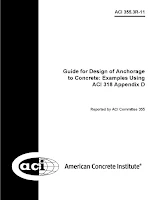Grouting Theory and Practice
E. Nonveiller ...
260 pages
Publisher: Elsevier Science (May 1, 1989)
Language: English
ISBN-10: 0444565205
ISBN-13: 978-0444565204
Grouting is a construction process by means of which the highly erratic permeability and deformability of foundation rock and soil are homogenized. The main parameter governing the design and construction of grouting works is the permeability of the rock or soil, which is established by means of field permeability tests. This book assembles information on rock and soil grouting from various sources, together with the author's personal experience on several grouting projects. Some aspects of permeability testing of rock and soils are elaborated, and the use of theoretical ground water percolation studies for clarification of design options for grout curtains are presented. The results achieved by grouting are presented and analysed on examples of constructed grouting works (curtains, tunnels, foundations, lifting of structures). Particulars of the performance of the permeability tests and their evaluation are studied in some detail, since they can very much distort the results obtained, and thus lead to erroneous design assumptions. Systematic grouting and adjustment of the injection process to the development of grout consumption and pressure during injection is discussed in connection with the achievement of the required permeability standard. The application of grouting to reduce the permeability and the deformability of the foundation of dams and hydrotechnical structures is presented, together with a number of illustrative examples. Characteristics of contact and consolidation grouting of dam foundations and tunnel linings are described. The possibilities and examples of rock prestressing by means of grouting are reported, and the results from several applications are discussed. Examples of lifting and levelling leaning structures by means of grouting are also reviewed. The book is illustrated by 180 drawings and 20 photographs, and a list of symbols used in the formulae, plus a glossary of specific terms use.
260 pages
Publisher: Elsevier Science (May 1, 1989)
Language: English
ISBN-10: 0444565205
ISBN-13: 978-0444565204
Grouting is a construction process by means of which the highly erratic permeability and deformability of foundation rock and soil are homogenized. The main parameter governing the design and construction of grouting works is the permeability of the rock or soil, which is established by means of field permeability tests. This book assembles information on rock and soil grouting from various sources, together with the author's personal experience on several grouting projects. Some aspects of permeability testing of rock and soils are elaborated, and the use of theoretical ground water percolation studies for clarification of design options for grout curtains are presented. The results achieved by grouting are presented and analysed on examples of constructed grouting works (curtains, tunnels, foundations, lifting of structures). Particulars of the performance of the permeability tests and their evaluation are studied in some detail, since they can very much distort the results obtained, and thus lead to erroneous design assumptions. Systematic grouting and adjustment of the injection process to the development of grout consumption and pressure during injection is discussed in connection with the achievement of the required permeability standard. The application of grouting to reduce the permeability and the deformability of the foundation of dams and hydrotechnical structures is presented, together with a number of illustrative examples. Characteristics of contact and consolidation grouting of dam foundations and tunnel linings are described. The possibilities and examples of rock prestressing by means of grouting are reported, and the results from several applications are discussed. Examples of lifting and levelling leaning structures by means of grouting are also reviewed. The book is illustrated by 180 drawings and 20 photographs, and a list of symbols used in the formulae, plus a glossary of specific terms use.












